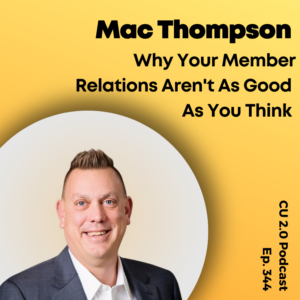It’s a wild world out there. Disruptive technologies and emergent market conditions are forcing us to completely reconsider our credit union strategies. If you want to be ready for what comes next, you need a credit union strategic planning facilitator.
Each summer, hundreds of credit union boards and executives gather at a beautiful offsite location to dream about the future. First comes the icebreaker, then some tough questions. Oh, and of course there’s the look into industry trends and peer data.
But then… THEN… it’s time to plan. Out come the sticky notes, markers, and easels to outline a future we can all (mostly) agree with.
But how do you choose the right facilitator? Do you want your assumptions challenged? Do you need a thick folder full of industry data? Or do you just need someone to speak and set the stage for what comes next?
Whether you want granular investigations of lending and operations or bold visions of digital transformation, you have options.
Whichever direction you want to take, choosing the right facilitator is key. Here’s what to look for.
Industry Experience
Credit Unions are a unique animal. We are half non-profit, half cooperative, and half bank. Yes, we know we can’t add. But every aspect of how credit unions plan, fund, and work is different from other businesses in many ways.
Our ways are both our strategic advantage and our Achilles heel. Because of this, having a facilitator that gets the “credit union difference” is essential. Without this alignment, you will waste precious time explaining to the outsider the difference between a credit union and a bank (or why we can’t just raise more capital).
Understanding of ALM, member onboarding, digital blueprints, board governance, and the NCUA are all key elements that your credit union strategic planning consultant should possess.
Proven Facilitation Techniques
A strategic planning session can go in many directions. Some groups thrive on open discussion, while others need structured brainstorming to stay on track. A facilitator should be able to read the room and adapt their approach to maximize engagement.
A good, experienced credit union strategic planning facilitator will use proven facilitation techniques to engage, involve, and energize all parties in the process. If you’ve been through multiple credit union planning sessions, then some of these might look familiar:
- Action Planning
- Brainstorming
- Energizer
- Flipchart
- Go Wild
- Ground Rules
- Group Review
- Ice Breakers
- Meta-planning
- Multi-voting
- Ranking
- Reverse Brainstorming
- Round Robin
- Structure Problem Solving
- 3-Star Rating
- Working in pairs or trios
Some teams need big-picture conversations to align on vision. Others benefit from data-driven planning, focused on setting clear, measurable goals. A good facilitator will bring a mix of techniques—and know when to change course if one isn’t working.
An Understanding of Key Trends
Strategic planning isn’t about solving yesterday’s problems. It’s about preparing for what’s next.
A facilitator who is still talking about the same challenges from a decade ago probably isn’t the right fit. Credit unions today need to think about fintech partnerships, artificial intelligence, changing demographics, emergent regulatory and economic conditions, and shifting consumer expectations.
The best facilitators bring fresh insights and data to help credit unions make informed decisions. Some may guide conversations. Others will help leadership teams see what’s coming.
But all of them should be aware of what’s happening today and what will likely happen tomorrow… not just what things looked like historically.
This is the time to look ahead, not to the past!
Financial Model Expertise
Credit unions are member-owned cooperatives, but they still need to be financially sustainable. Any meaningful strategic discussion needs to include a solid understanding of the balance sheet.
A facilitator should be able to balance growth strategies with financial stability, ensuring that credit unions are thinking about profitability, risk, and long-term sustainability in addition to member service.
Board and Management Experience
Credit union strategic planning isn’t just about setting goals—it’s also about making sure leadership is aligned. Board members and executives don’t always see eye to eye, and a good facilitator can help bridge those gaps.
Facilitators who have served on credit union boards or worked with leadership teams understand the common struggles. They know how to steer discussions toward practical solutions instead of theoretical ideas that won’t get implemented.
Final Thoughts
Choosing a strategic planning facilitator is about more than just who can run a good meeting. It’s about finding someone who can help cut through the noise, challenge the status quo, and make sure the credit union is thinking strategically—not just operationally.
The right facilitator won’t just lead a planning session. They’ll help set the stage for meaningful, long-term growth.
Choosing Your Strategic Planning Facilitator
It’s not just about running a good meeting. Choosing your facilitator should help you understand things differently, giving you a clearer view of the future (and your place in it). They should help you see what you need to change. If you leave your meeting planning to do “more of the same,” then it was a waste of a meeting.
We can’t tell you which credit union strategic planning facilitator is right for you. However, we can give you a list of the top ~20 or so that we know of.
Additionally, if you’re looking for a facilitator that focuses on speaking and getting board alignment about growth and technology, CU 2.0 might be a good fit. Kirk Drake and Chris Otey have decades of experience in credit union C-suites and boards of directors, plus additional experience in founding, running, and consulting with credit union technology providers and CUSOs.
Download the CU 2.0 strategic planning proposal here:




